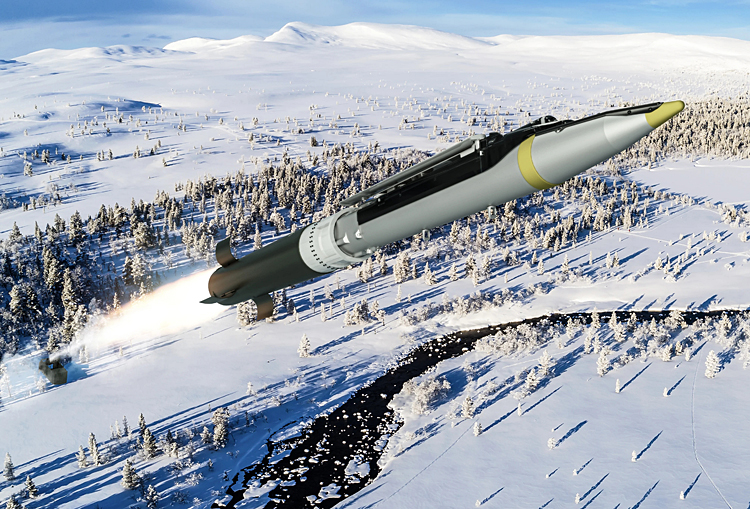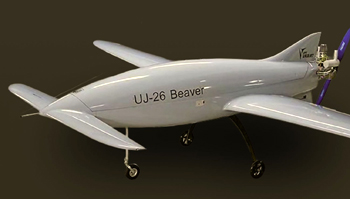INDIAN ARMED FORCES CHIEFS ON OUR RELENTLESS AND FOCUSED PUBLISHING EFFORTS

The insightful articles, inspiring narrations and analytical perspectives presented by the Editorial Team, establish an alluring connect with the reader. My compliments and best wishes to SP Guide Publications.

"Over the past 60 years, the growth of SP Guide Publications has mirrored the rising stature of Indian Navy. Its well-researched and informative magazines on Defence and Aerospace sector have served to shape an educated opinion of our military personnel, policy makers and the public alike. I wish SP's Publication team continued success, fair winds and following seas in all future endeavour!"

Since, its inception in 1964, SP Guide Publications has consistently demonstrated commitment to high-quality journalism in the aerospace and defence sectors, earning a well-deserved reputation as Asia's largest media house in this domain. I wish SP Guide Publications continued success in its pursuit of excellence.
Cutting Edge Weaponry - Ukraine War
The Russia-Ukraine war has become a crucial testing ground for developing, testing and deploying the latest weapons and new military technologies
 |
The Author is Former Director General of Information Systems and A Special Forces Veteran, Indian Army |

While Russia and Ukraine agreed to not attack each other's energy infrastructure, Ukrainian President Volodymyr Zelensky broke it immediately thereafter. A full and permanent ceasefire still appears to be a Chimera. Drone, missiles and long-distant bomb strikes have gone up exponentially. With Ukraine facing shortage of ATACM missiles, the US is supplying long-range Ground-Launched Small Diameter Bombs (GLSDB) to Ukraine that have a range of 100 miles and can counter Russian jamming.
With Ukraine facing shortage of ATACM missiles, the US is supplying long-range Ground-Launched Small Diameter Bombs (GLSDB) to Ukraine that have a range of 100 miles and can counter Russian jamming
Ukraine has been deploying large numbers of First-Person View (FPV) drones that are cheap and easy to manufacture. Since May 2023, Ukraine has also been using UJ-26 'Beaver' drones to attack targets near Moscow and Volgograd. Constructed from plastic and carrying 20 kg explosive, these drones travel at speeds of 150 km/h and have a range exceeding 1,000 km. These drones use satellite navigation and have a simple design suitable for cost-effective mass production.

The new addition in Ukraine's arsenal is its indigenous AN-196 'Liutyi' drone featuring a conventional airplane design with a twin-boom tail structure – visually similar to the Turkish Bayraktar TB2. With a length of four metres, wingspan of seven metres, carrying 50-75 kg explosives, speed of 150 kmp/h and range of 1,300-1,500 km, these drones strike deep inside Russia, targeting Tatarstan and Bashkortostan. These drones are equipped with an autonomous control system using satellite navigation, with provision of manual adjustment also against potential disruption from electronic warfare systems.
Ukraine is developing a long-range missile (upgraded version of its Trembita cruise missile) as a substitute to the American ATACMS. The advanced version of the missile would be able to travel 650 km as opposed to the 145-km of Trembita. The Trembita can travel at a speed of up to 400 kmph because of its pulsejet engine, which is rarely used in modern-day missiles. The engine, however, produces a lot of heat and 100 dB of sound, which makes the Trembita a desirable target for enemy air defence, particularly MANPADS missiles. The Trembita costs just $10,000 and while its advanced version would cost more than $10,000, the ATACM costs more than $1 million.
The new addition in Ukraine's arsenal is its indigenous AN-196 'Liutyi' drone featuring a conventional airplane design with a twin-boom tail structure – visually similar to the Turkish Bayraktar TB2
According to news reports of February 14, 2025, Ukraine has developed a drone that can hide underwater and strike from the deep. This new drone looks like a 'submersible aircraft' or 'flying submarines' which can transition from air to underwater mode.
Russia has been effectively using its Lancet-3 drones, having a range of 70 km, in counter-battery warfare, targeting NATO-supplied howitzers with firing ranges of around 40 km. With integrated reconnaissance and strike capabilities, these drones can accurately locate and selectively attack critical enemy targets. Carrying warheads weighing up to 3-kg, they are particularly suited to neutralise light armoured vehicles and enemy personnel.
Russia is also using First-Person View (FPV) drones, which are piloted via specialised virtual reality goggles, with operators remotely manoeuvring these compact quadcopters armed with explosive, shaped-charge, or fragmentation munitions. However, operating FPV drones demands specialised skills and expertise. With control via radio transmitter, these drones have the ability to deliver precision strikes against enemy fortifications, individual armoured vehicles, and personnel. The versatility and proliferation of FPV drones signal the rise of 'Drone Troops' in militaries around the world.
In 2024, Russia began using fiber-optic drones in Ukraine
In 2024, Russia began using fiber-optic drones in Ukraine. Initially, drones relied on wireless signals, prompting both sides to deploy electronic warfare systems to jam them. Now, the shift to fiber-optic has become the latest front in the ongoing battle for superiority. Unlike traditional drones, fiber-optic FPVs are linked to their operators through cables. The main advantage is their immunity to electronic warfare and jamming, while also providing excellent video quality. However, these drones must carry a fiber-optic spool, because of which they are bigger, slower and vulnerable to ground fire. The first drones of this new generation were deployed to frontline positions in 2024, playing a crucial role in disrupting Ukrainian supply lines near Sudzha during the Kursk Region counterterrorism operation. Russia has also deployed AI-equipped drones that carry microcomputers capable of autonomous target identification and guidance without pilot intervention.
Russia is also using Bombs equipped with Unified Glide and Correction (UMPK) kits. Initially, UMPKs were created for standard 500 kg bombs, however, in 2023, more potent 1,500 kg FAB-1500 M-54 bombs fitted with UMPK modules were deployed. Early 2024 saw widespread use of these advanced weapons, with the capacity to dismantle fortified Ukrainian positions around Avdeevka; with a range of 50-60 km, bombers could strike safely beyond the reach of enemy air defences. In February 2024, Russia resumed manufacturing high-explosive FAB-3000 M-54 bombs weighing 3-tonnes each. Compatible UMPK modules were developed, and combat testing was successfully conducted using Su-34 bombers. Russia's TOS-2 'TOSOCHKA' thermobaric rocket launcher system with 24 km range is playing havoc with Ukrainian forward positions.
Russia's 'Geran' kamikaze drones travel at speeds 150-170 kmp/h and an operational range of up to 2,000-km, enabling them to strike targets throughout Ukraine. Capable of flying intricate trajectories, Geran drones can overwhelm enemy air defence systems when deployed in large numbers, thus clearing paths for cruise and ballistic missile attacks. Geran drones effectively target dual-purpose infrastructure, military installations, and Ukrainian weapon storage sites.
Russia's Oreshnik missile system is a mobile launcher utilizing solid-fuel ballistic missiles fitted with multiple independently targetable warheads capable of hypersonic speeds up to Mach 10
Russia's 'Zircon' and 'Oreshnik' missiles have been creating havoc in Ukraine. Russia fired the Zircon first time from Crimea to targets near Kiev in February 2024. Initially designed primarily as a naval anti-ship weapon for ship- and submarine-based launch platforms, development of land-based launchers for the Zircon began shortly before hostilities broke out in Ukraine. With speeds of around Mach 8 and a maximum estimated range of over 1,000 km, Zircon missiles enable Russia to strike deep into Ukrainian territory. Beyond enhancing naval power, the Zircon's compatibility with mobile land launchers allows rapid deployment to virtually any operational theatre.
Russia's Oreshnik missile system is a mobile launcher utilising solid-fuel ballistic missiles fitted with multiple independently targetable warheads capable of hypersonic speeds up to Mach 10. Experts estimate the Oreshnik's range between 800 and 5,000 km, allowing launches from Russian territory that can strike targets throughout Europe without the use of nuclear weapons. During the initial combat deployment against Dnepr, a cluster munition warhead was employed, specifically designed to inflict maximum damage on area targets such as military bases, airfields, and defence industry infrastructure.
Countering drone attacks pose significant challenges as witnessed in the war in Ukraine. Ukraine is installing net tunnels to protect vehicles from Russian FPV drones, particularly against fiber optic FPVs that are unaffected by vehicle borne EW jammers. Traditional air defence systems struggle to detect drones because of their small size, possible non-metallic construction, and low-altitude flying FPVs leveraging terrain features and electronic warfare, exploiting gaps in air defences. Effective drone defence requires a comprehensive strategy encompassing frontline protection, instant tracking, and target-site defence measures. Passive defences, like installing nets and physical barriers, can also help by triggering premature drone detonation at safer distances. Given the limited payload of drones, even detonating them a few metres away can reduce the damage significantly.





